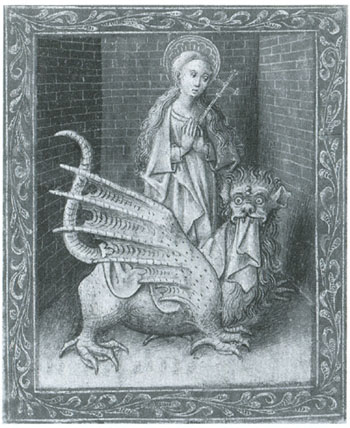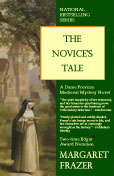
Sins of the Blood is a collection of three Frevisse short stories — “The Witch’s Tale”, “The Midwife’s Tale”, and “The Stone-Worker’s Tale” — being released exclusively for the Amazon Kindle. It also includes the all-new and entirely original Guided Tour of St. Frideswide: In 40 pages, we walk through both the nunnery and the village of Prior Byfield, discussing the history of the setting and revealing details never-before-known.
(Well, never-before-known to anyone except me.)
St. Frideswide, as it has developed over the course of the Frevisse series, is something like an iceberg: 10% has been visible through the novels and short stories, but there’s this immense depth that I’ve built up “below the surface” (so to speak) that I’m excited to be able to share with you.
THE WITCH’S TALE
Witchcraft has come to the peaceful village near St. Frideswide, and its foul touch is striking down those closest to the church. Can Dame Frevisse thwart the servants of the devil before the hellfire of hysteria sears the souls of the faithful? Or is there more to this magic than meets the eye?
THE MIDWIFE’S TALE
“Sisters! Come back! Please don’t leave us yet!”
Cisily Fisher has died in childbirth and now the village of Priors Byfield is held in a grip of fear. Can Dame Frevisse find the root of misery behind a murderer’s sin before the next lethal blow falls? Or will the village be lost in a hue and cry of terror? The gentling touch of the midwife may calm the tortured soul… or give birth to a bitter death.
THE STONE-WORKER’S TALE
When Frevisse is given bishop-pardoned leave to visit her cousin Alice at Ewelme, she is enchanted by the work of the sculptor Simon Maye. But Simon is enchanted by the beauty of Elyn, one of Alice’s ladies in waiting. Clandestine meetings have given way to sinful lust, and now the two lovers have disappeared. The servants whisper that the lovers have eloped, and secretly pine for the passion to do the same. Lady Alice believes her sculptor has been stolen away by jealous rivals and rages at the injustice. But Frevisse alone suspects there may be some darker truth behind the midnight vanishing…
A GUIDED TOUR OF ST. FRIDESWIDE
And so we turn to St. Frideswide’s in rural northern Oxfordshire. Imaginary, yes, but fully realized as an ordinary place much like many others common across England in both rural and urban settings by the 1400s. A wealthy widow founded it in the 1300s, saw to its beginning, and endowed it with lands and other income to sustain it – alas, not so fully as she intended to do before she died…
Kindle Edition
Why is this a Kindle exclusive?
The short version is that I’m trying to introduce Dame Frevisse to new readers. Amazon offers a unique program called the Kindle Owners’ Lending Library: Any Amazon Prime member who owns a Kindle can borrow books from the Lending Library for free. I’m hoping that making Dame Frevisse a part of the Lending Library will expose new readers to her stories.
But in order to get your books included in the Lending Library, you have to offer a title exclusively through Amazon. I didn’t want to take any of my existing books off the market, so I created Sins of the Blood and “A Guided Tour of St. Frideswide” as something that I could enroll in the program.
What if you don’t own a Kindle? Well, there’s some good news:
(1) The three short stories — “The Witch’s Tale”, “The Midwife’s Tale”, and “The Stone-Worker’s Tale” — are still being sold separately as individual e-book titles through Amazon, Barnes & Noble, Smashwords, iBooks, Google Play, and many other online bookstores. (It’s also relatively easy to find used copies of the original short story collections they were published in.)
(2) There are a wealth of Kindle Reading Apps which will allow you to read Kindle e-books on any iPad, Android, Windows PC, Mac, or Blackberry device. Basically, if you’re reading this blog post you’ll be able to read Sins of the Blood on the same machine.
(3) All of the books that I directly control the rights to are sold DRM Free. That means there’s no copy protection on the e-book files: If you buy the e-book from Amazon, you’ll be able to freely and easily convert it to any e-reader of your choice.
– Margaret




















